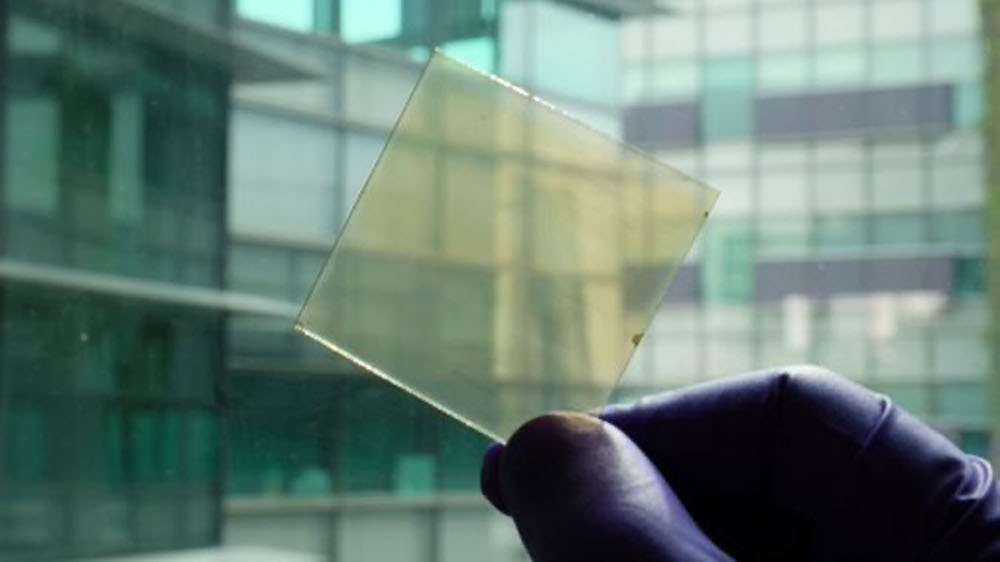Create a free profile to get unlimited access to exclusive videos, sweepstakes, and more!
Smart glass that almost thinks for itself can replace your heater and AC
In the near future, you might finally be able to trash heating and AC bills for real, thanks to smart glass.

Tired of your energy bill skyrocketing with the heat — and not exactly plummeting with the cold? There might soon be a futuristic alternative to your heater and AC.
An unprecedented energy-saving material developed by an international team of scientists can now be used to cover glass so it adapts to the weather, heating, or cooling rooms depending on temperature fluctuations outside. The unique structure of this clear substance self-adjusts by using spectrums of light rather than massive amounts of energy. Meaning, heaters and air conditioning systems may someday end up obsolete, and smart glass could become a thing.
This is the first substance that is able to manage both heating and cooling on its own when stuck on glass. Previous attempts at similar coatings could only do one or the other, but researcher Shancheng Wang of Nanyang Technological University (NTU) in Singapore, who led a study recently published in Science, wanted to push the tech further. Vanadium dioxide is a critical component that makes this material able to regulate both heat and cold.
“Vanadium dioxide is a near room temperature phase change material,” Wang told SYFY WIRE. “Its properties such as optical transmittance, electrical resistance, and crystal structure will spontaneously change when surrounding temperature changes.”
There are actually rock-eating microbes “mining” for vanadium in space (one of the coolest experiments recently done on the ISS), and biomining is a less environmentally hazardous way of obtaining it than the usual mining methods. Vanadium dioxide was used in nanoparticle composite form. These types of materials are made of particles on a nanoscale, and are a new frontier when it comes to technology. Nanomaterials have unique properties that have been allowing many newly developed substances to do what has never been done before.
By layering the vanadium dioxide nano-composite with transparent polymathy methacrylate (PMMA) and iridium tin oxide, which acted as an underlying low-emissivity coating, Wang’s team created a Fabry-Pérot resonator. The Fabry-Pérot effect occurs when a beam of light shines through two parallel reflective surfaces, which are the layers of smart material, with space between them. That beam is broken into many beams that get in each other’s way. As a radiator, the layered smart substance can handle both heating and cooling on its own.
What we perceive as heat and cold come from two types of solar infrared radiation. Near-infrared light has wavelengths just slightly longer than what the human eye can see; it is nearer to visible light on the spectrum. Far-infrared light is much further away from the visible region and closer to the microwave part of the spectrum. A window with smart material can cool a room when it blocks near-infrared light and allows more far-infrared light through. When it does the inverse, it heats a room, which could cut down on an unbelievable amount of emissions.
“We can adjust the heating and cooling performance through adjusting the structure of the Fabry-Perot resonator,” said Wang. “In particular, we can adjust the window's heating cooling performance through adjusting the thickness of every layer.”
Immense amounts of energy are burned because of rooms either gaining or losing too much heat through windows. We perceive more heat as warmth and heat that is escaping as cooling, and the greater the absence of heat, the colder we feel. The problem with previous technologies is that they were only made for regulating heat or cold. Most existing smart windows are made to regulate solar light, and heat with it. Wang and his team developed this one to be flexible to handle everything from scorching afternoons to frigid nights.
“In our newly developed smart window, we combined the regulation of radiative cooling and solar light into one window,” he said.
Another plus? Smart windows don't need any light blockers to heat and cool, so you can still have a room with a view.


























